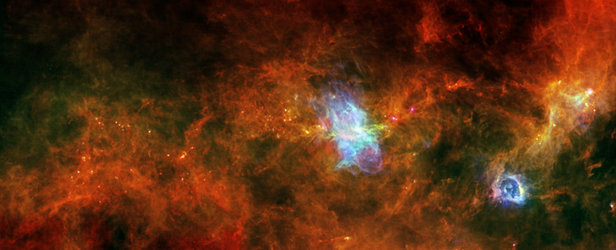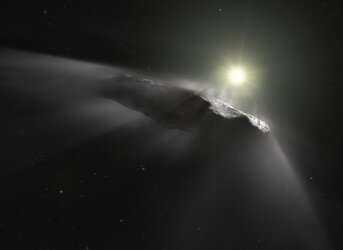Accept all cookies Accept only essential cookies See our Cookie Notice

About ESA
The European Space Agency (ESA) is Europe’s gateway to space. Its mission is to shape the development of Europe’s space capability and ensure that investment in space continues to deliver benefits to the citizens of Europe and the world.
Highlights
ESA - United space in Europe
This is ESA ESA facts Member States & Cooperating States Funding Director General Top management For Member State Delegations European vision European Space Policy ESA & EU Space Councils Responsibility & Sustainability Annual Report Calendar of meetings Corporate newsEstablishments & sites
ESA Headquarters ESA ESTEC ESA ESOC ESA ESRIN ESA EAC ESA ESAC Europe's Spaceport ESA ESEC ESA ECSAT Brussels Office Washington OfficeWorking with ESA
Business with ESA ESA Commercialisation Gateway Law at ESA Careers Cyber resilience at ESA IT at ESA Newsroom Partnerships Merchandising Licence Education Open Space Innovation Platform Integrity and Reporting Administrative Tribunal Health and SafetyMore about ESA
History ESA Historical Archives Exhibitions Publications Art & Culture ESA Merchandise Kids Diversity ESA Brand CentreLatest
Space in Member States
Find out more about space activities in our 23 Member States, and understand how ESA works together with their national agencies, institutions and organisations.
Science & Exploration
Exploring our Solar System and unlocking the secrets of the Universe
Go to topicAstronauts
Missions
Juice Euclid Webb Solar Orbiter BepiColombo Gaia ExoMars Cheops Exoplanet missions More missionsActivities
International Space Station Orion service module Gateway Concordia Caves & Pangaea BenefitsLatest
Space Safety
Protecting life and infrastructure on Earth and in orbit
Go to topicAsteroids
Asteroids and Planetary Defence Asteroid danger explained Flyeye telescope: asteroid detection Hera mission: asteroid deflection Near-Earth Object Coordination CentreSpace junk
About space debris Space debris by the numbers Space Environment Report In space refuelling, refurbishing and removingSafety from space
Clean Space ecodesign Zero Debris Technologies Space for Earth Supporting Sustainable DevelopmentLatest
Applications
Using space to benefit citizens and meet future challenges on Earth
Go to topicObserving the Earth
Observing the Earth Future EO Copernicus Meteorology Space for our climate Satellite missionsCommercialisation
ESA Commercialisation Gateway Open Space Innovation Platform Business Incubation ESA Space SolutionsLatest
Enabling & Support
Making space accessible and developing the technologies for the future
Go to topicBuilding missions
Space Engineering and Technology Test centre Laboratories Concurrent Design Facility Preparing for the future Shaping the Future Discovery and Preparation Advanced Concepts TeamSpace transportation
Space Transportation Ariane Vega Space Rider Future space transportation Boost! Europe's Spaceport Launches from Europe's Spaceport from 2012Latest

Not your typical protostar
Thank you for liking
You have already liked this page, you can only like it once!
At the centre of this image, captured by ESA’s Herschel space observatory, is a truly peculiar cosmic object: a star named IRAS 19312+1950.
Located over 12 000 light-years from us, this star has puzzled astronomers for many years because it shows conflicting signs of being both extremely old and extremely young.
Astronomers have spotted signs of emission usually associated with old, late-type stars: silicon oxide and hydroxyl masers – the microwave equivalent of a visible-light laser.
But they have also discovered characteristics mostly seen around early-type stars: a chemical-rich enveloping cloud usually seen around youthful stars and in regions of star formation.
Infrared observations from both Herschel and NASA’s Spitzer Space Telescope now suggest that it may instead be a star in the making, rather than a fully-fledged or ancient star. In other words, it is a protostar.
The star is about 10 times as massive as the Sun and emits about 20 000 times as much energy. It appears to be rich in oxygen, and has jets of gas streaming from both poles at speeds of at least 90 km/s.
In addition, it is surrounded and obscured by a collapsing cloud of gas, dust and ice – including large quantities of water and carbon dioxide ice – that contains an overall mass equivalent to 500 to 700 Suns.
Although it displays features atypical of its peers, astronomers believe it to be a stellar embryo fast approaching the end of its ‘accretion’ stage, the period in which it feeds upon surrounding material to fuel its growth. Although the region had not been pinpointed as a stellar nursery before, there are signs of recently formed and youthful stars nearby, supporting this idea.
This image is a composite of infrared data gathered by Herschel’s Photoconductor Array Camera and Spectrometer (PACS) at 70 (green) and 160 (blue) microns. The associated research is published in the Astrophysical Journal.
-
CREDIT
ESA/Herschel/PACS/Hi-GAL Project, KU Leuven -
LICENCE
ESA Standard Licence

Violent wind gusting around protostar

Star factory NGC 7538

Vela C region

Jetting into space















 Germany
Germany
 Austria
Austria
 Belgium
Belgium
 Denmark
Denmark
 Spain
Spain
 Estonia
Estonia
 Finland
Finland
 France
France
 Greece
Greece
 Hungary
Hungary
 Ireland
Ireland
 Italy
Italy
 Luxembourg
Luxembourg
 Norway
Norway
 The Netherlands
The Netherlands
 Poland
Poland
 Portugal
Portugal
 Czechia
Czechia
 Romania
Romania
 United Kingdom
United Kingdom
 Slovenia
Slovenia
 Sweden
Sweden
 Switzerland
Switzerland
























